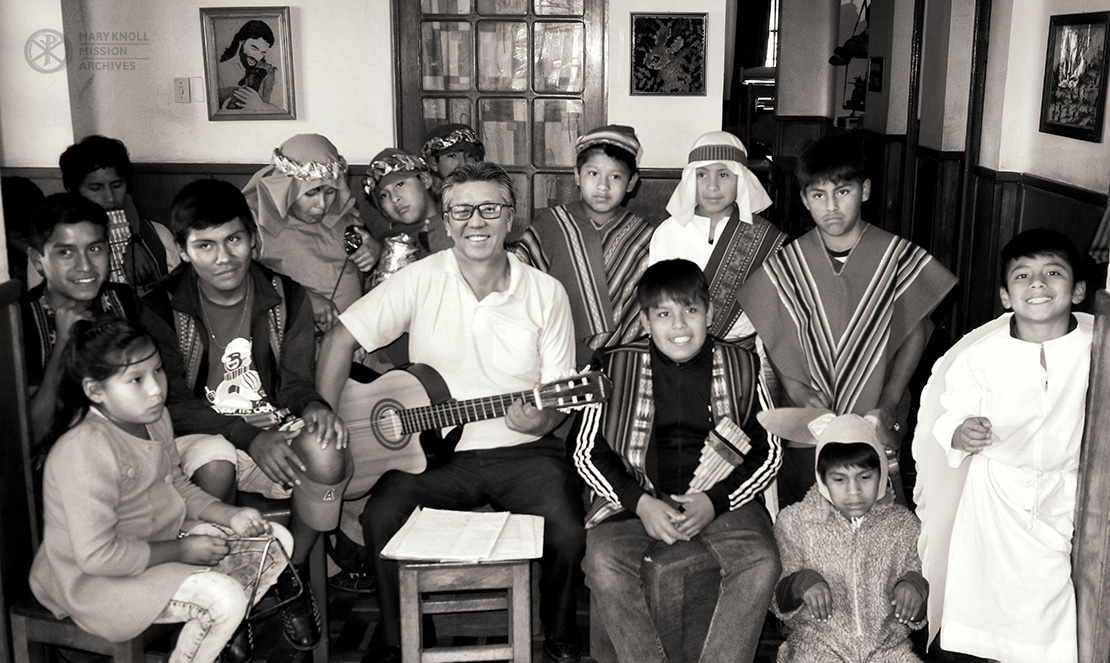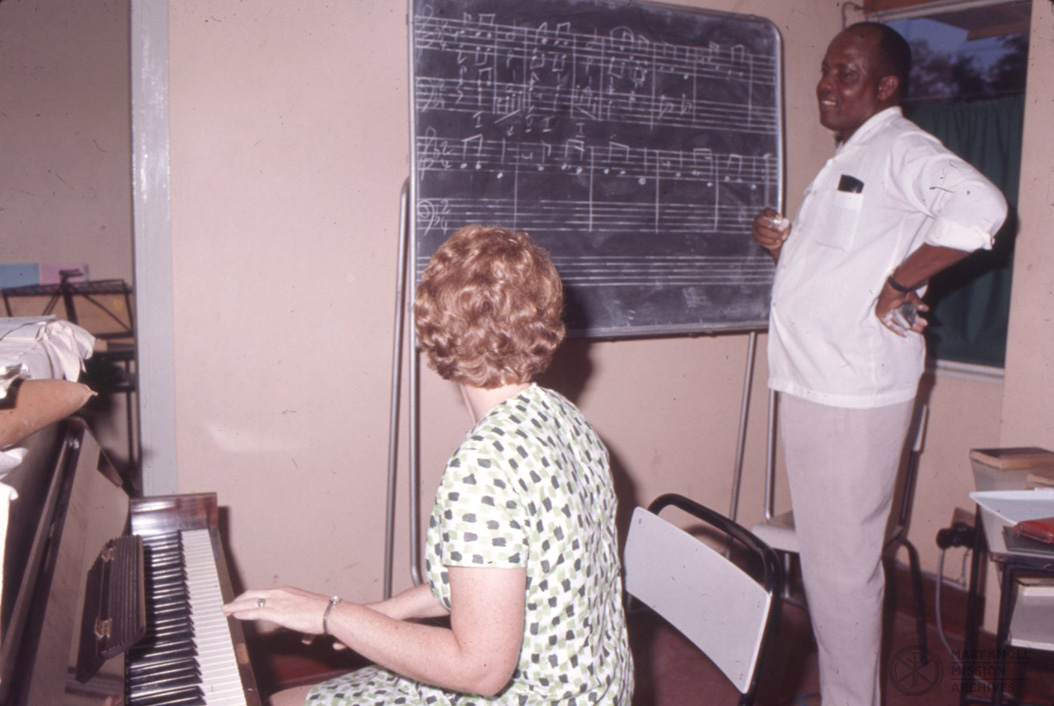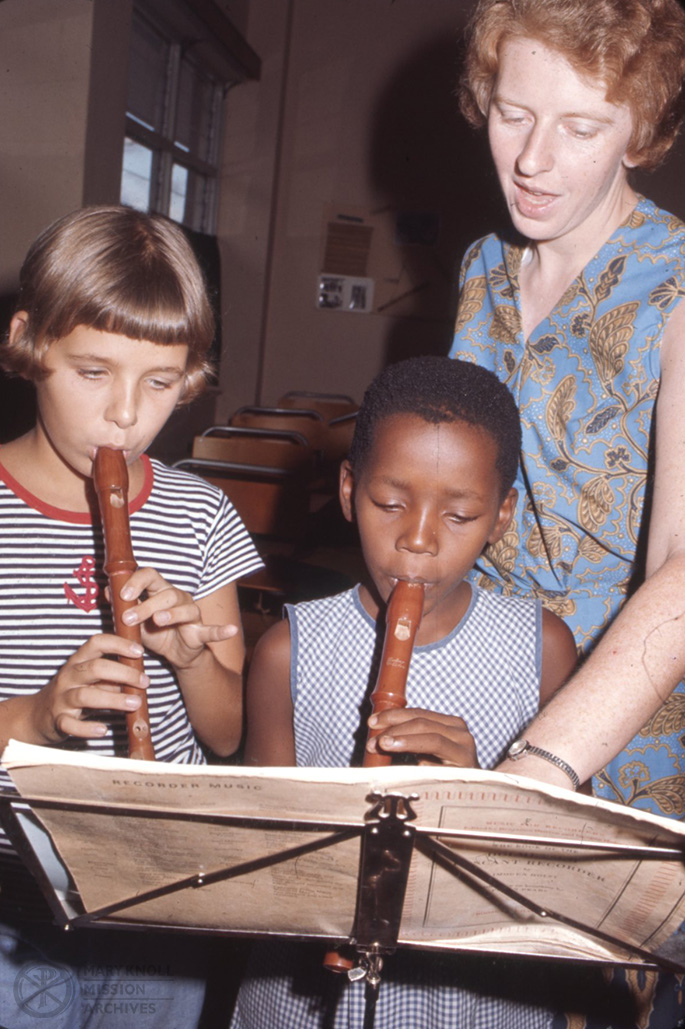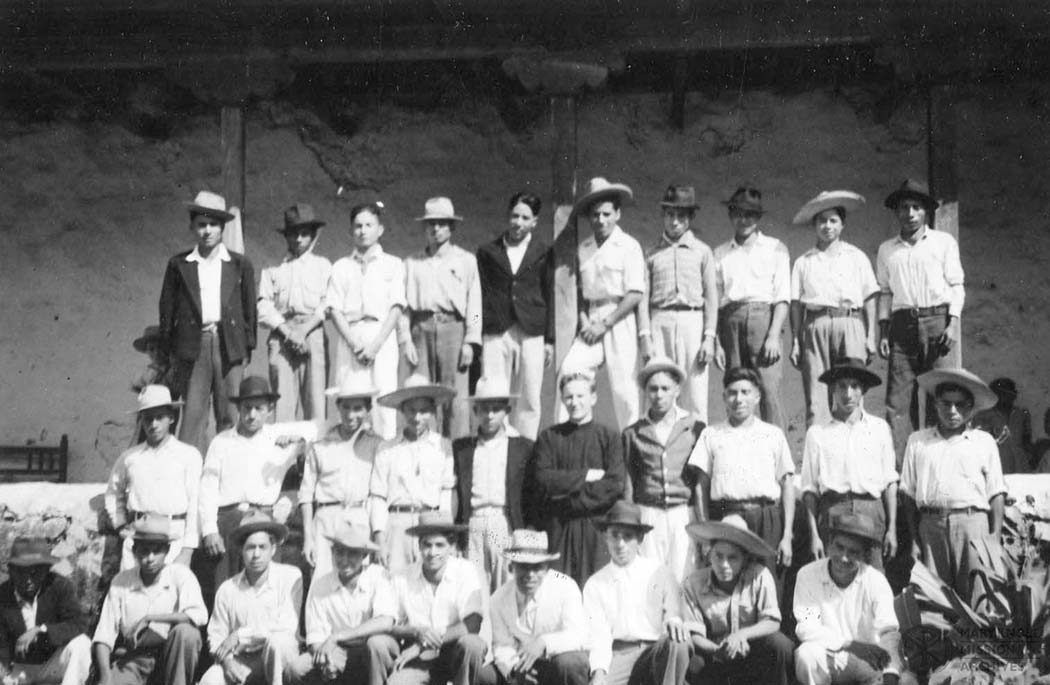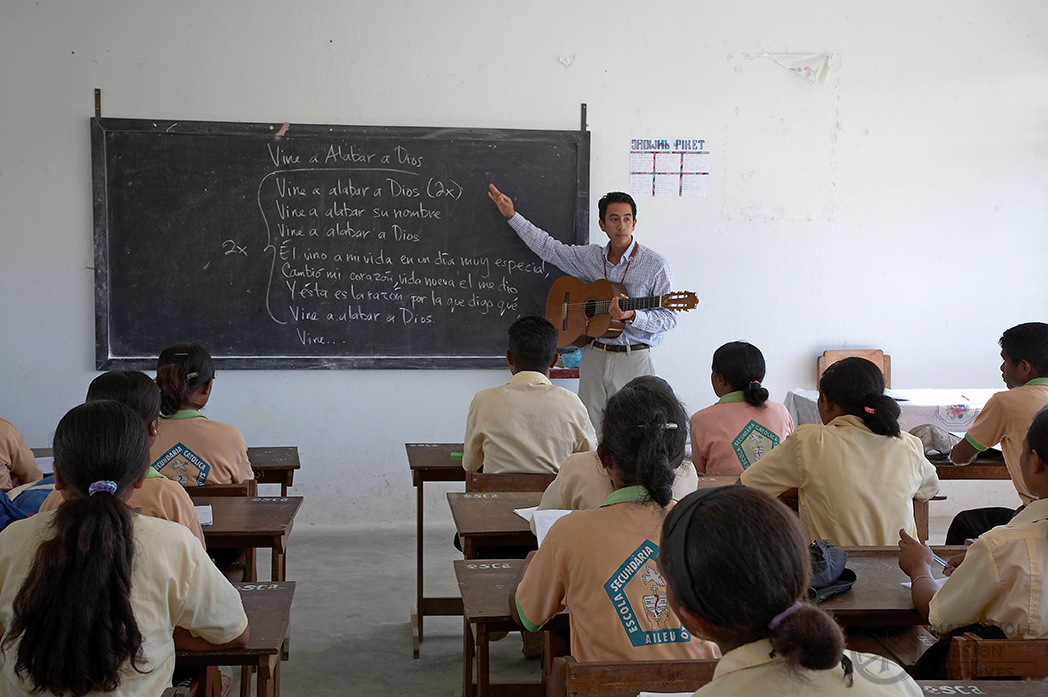Around the world, musical traditions continue because they are taught within and beyond their local communities. The experience of teaching music to others and learning music yourself is a kind of dialogue. The teacher shares their musical knowledge, which the student interprets in their own way. The student goes on to teach others, continuing the dialogue. Here we share a few examples of Maryknollers engaging in this musical dialogue, teaching and learning in their mission communities.
“During my time in mission, I also taught music to the boys at Casa Nazaret, a home created by the Sisters of Mercy for the street kids of Cochabamba, Bolivia. At Casa Nazaret, I taught the kids how to sing some children’s songs in English. My Spanish at the time was not good enough to converse fluently with the boys but I think music really brought us together. We sang and laughed and we learned so much from each other through music, the language without borders.”
“My first ministry in Tanzania was teaching music at the Music Conservatory of Tanzania. We taught anyone and everyone who wanted to learn music. I taught reading and writing music to local dance band members and to the national army band; piano to many expatriate children, as well as some local children and adults; clarinet to a couple children; organ to a few adults… I did always use music in teaching English. Teaching English to high school girls and neighborhood small children gave opportunities to use English songs to learn the language. I especially used rounds so the class produced beautiful harmonies as the songs were sung.”

Fr. Michael Snyder served as a pastor and chaplain in Tanzania for 26 years after his ordination in 1979. Music was key to his ministry in Africa. Learning new songs and prayers let Fr. Snyder immerse himself in the liturgy and traditions of his congregations. He could also share his own musical knowledge with the people to teach something new. Through music, Fr. Snyder became part of the community.
Below is a clip from Maryknoll’s Mission Stories podcast. Here Fr. Snyder talks about the role of music in his mission work. Click here to hear the entire podcast episode.
A clip from Mission Stories feat. Fr. Snyder
With a minimum of teaching and not more of actual singing, the Indians have already sung four Masses and three times the Tantum Ergo during Benediction. Individually their untrained and squeaky voices are not good. Put them all together, throw in some Padres who never cracked that inner circle of fine voices during the Seminary training, and the effect is remarkable! The naturales love to sing, and even though most of the groups referred to above do not read, or, if they do so, read very poorly, nevertheless they have a natural aptitude for Chant… And yet it is too early to say how lasting these attempts to teach the simpler parts of the Chant of Benediction and the Mass will be. Still, there is every indication that the congregation is off to a flying start.
“In East Timor, I worked as a music and English teacher at the local public and Catholic high schools in the rural town of Aileu… While I taught them how to read simple melodies and rhythms, I introduced them to songs from a variety of countries… During my years in East Timor when the country was going through civil strife, I had learned and taught a song entitled ‘Paz, Domin, Kristu (Peace, Love, Christ)’ to my students who lived in the Western part of the country. On a trip to the Eastern part of the country…[my students and local students] sat together one evening by candlelight and shared our songs of hope and solidarity. It was very beautiful and unforgettable.”

